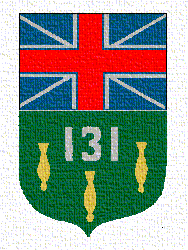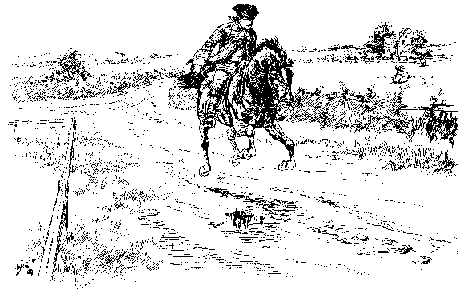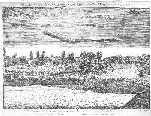 |
 |
 |
 |
History
Throughout the colonial period and well into the 19th century, town militias were a fixture of each New England community. In a tradition dating back to 16th century England, it was expected that all able bodied men gather on a regular basis to train for the purpose of protecting their communities. After the first colonies were established, the militia were organized to protect against attacks from the Indian inhabitants of New England. Later, they would become an important resource for Britain's military campaigns in North America, most notably against the French during the French and Indian War of the 1755-63. Town records show that many men from Westford participated in the campaigns against the French forts at Ticonderoga and Louisburg.1 As tensions began to rise between the American colonies and Britain, the militia became the means by which the political desires of the colonists would be enforced.
As early as 1645 New England saw the establishment of what would later be known as the “minutemen”, a subset of the town militias. Periodically, during times of crisis, a select group of men were set apart from the regular militia. Typically one third of the total, they drilled more frequently, sometimes as often as twice per week, were specially equipped, and were expected to be ready at “half an hour’s warning”.2

Following the French & Indian War, Britain attempted to repay some of it huge war debt by taxing its colonies. Colonial opposition to the “Stamp Act”, and later to the duties on tea which led to the Boston Tea Party, caused Parliament to enact the so called “Intolerable Acts”. Most significantly, this 1774 legislation closed the port of Boston, revoked the colony’s charter, and outlawed town meetings. Throughout this period, Boston was occupied by a large contingent of British soldiers, or “Regulars”. Needless to say, tensions were high. As a result, patriot leader Samuel Adams and his colleagues in the Boston committee of correspondence pushed a non-importation pledge through the
In late September of 1774, in an effort to insure that the colonial (also known as the “provincial”) military remained opposed to Britain’s policies, the Massachusetts militia reorganized itself. First, all field officers were asked to resign so that each regiment could elect new officers. This removed those who were sympathetic to the English crown from important positions in the provincial military establishment. Second, the officers of each town were “to enlist one third of the men of their existing towns, between the ages of sixteen and sixty years of age, to be ready to act at a minute’s warning.”3 Later, on October 26th, the reorganization of the army would be formalized by the Provincial Congress, and a Committee of Safety consisting of nine delegates was selected to command the militia and minute companies. Direct lines of communication were established so that a quick response could be made to any aggression by the King’s troops.
The minute and militia companies, ideally consisting of about 50 men, would be combined to form regiments of about 10 companies. The companies within a regiment would typically come from neighboring towns. The 1775 muster rolls of men who turned out on April 19th show that Westford had three companies, two of regular militia and one minute company, for a total of 130 men. The minute company fell under the command of Col. William Prescott of Pepperell. John Robinson of Westford served as Prescott’s Lt. Colonel. The other two companies fell under the command of Col. James Prescott of Groton. Using the census numbers of December, 1776, the minute and militia men who turned out on April 19th accounted for about 11% of the total population of Westford.4 Participation in the town militia was not necessarily a voluntary act, but was actually enforced by provincial law. (See the letter from town clerk Zaccheus Wright to Corporal William Hildreth on behalf of Capt. Jonathan Minot).
Westford, like all of the neighboring
communities, provided
support for the militia system. In March of 1748 the town paid
Joseph
Underwood 5 pounds for a training field
(now the center common) upon which the militia could drill on a regular
basis.
Additional land was added to the east of the field in March of 1767.5
When necessary, the town also provided supplies to keep the militia
properly
equipped. In addition, the residents of Westford stood firm and
made
clear their intentions to support Boston,
which
led the patriot cause.
Westford and the
Events of April
19th, 1775
At about 10:00 pm on the night of April 18th, 1775 General Thomas Gage, the British military governor of Massachusetts, sent between 800 and 900 of his Boston garrison of roughly 5000 regular troops on an expedition into the country side under the command of Lt. Col. Francis Smith. Their mission was to confiscate or destroy provincial military stores which Gage’s intelligence efforts told him could be found in the town of Concord, a 17 mile march away. The Committee of Safety learned of the plan and dispatched alarm riders (Paul Revere and William Dawes being the most famous, though by no means the only ones) to alert the provincial militia throughout eastern Massachusetts.

At daybreak, after a wet and tiring march, surrounded by the distant sound of musket fire and church bells sounding the alarm, the column reached the Lexington common. The town’s militia had decided to form a line, blocking the progress of the Regulars, to demonstrate their defiance. Ordered to disperse by British Major Pitcairn, the vastly outnumbered militia began to walk off the green. At this point a shot was fired, from where no one is certain. The Regulars took this as an opportunity to vent their frustration by firing, uncontrolled, upon the colonists. When they were finally brought back to order by their officers there were 10 men from Lexington either dead or fatally wounded. The column then continued toward Concord.
Lt. Colonel John Robinson of
Westford probably received
the alarm between 3 and 5 AM6.
Given
his rank in Prescott’s regiment, Robinson would have probably
been on the
list of officers to most directly receive notice of the  alarm. He quickly mounted his horse and set off for
Concord, telling
his hired man to follow with provisions. The Rev. Joseph Thaxter, Westford’s
candidate
preacher, also hastened to the bridge "with a brace of pistols" upon
hearing
the alarm and was present with Robinson and at least two others from
Westford.
Peter Brown of Jonathan
Minot's company said he was "call'd about Day light, or a little
after"
. It is thought that the remainder of the Westford militia gathered at the town common
prior
to the 10 mile march, though there is no known documentation of that actually occuring.
alarm. He quickly mounted his horse and set off for
Concord, telling
his hired man to follow with provisions. The Rev. Joseph Thaxter, Westford’s
candidate
preacher, also hastened to the bridge "with a brace of pistols" upon
hearing
the alarm and was present with Robinson and at least two others from
Westford.
Peter Brown of Jonathan
Minot's company said he was "call'd about Day light, or a little
after"
. It is thought that the remainder of the Westford militia gathered at the town common
prior
to the 10 mile march, though there is no known documentation of that actually occuring.
Upon his arrival at the bridge Robinson found approximately 500 militia and minutemen gathered under the overall command of Col. Barrett of Concord. Maj. Buttrick, on whose land the engagement was to occur, supported him. At the bridge three companies of British light infantry guarded the bridge while several other companies made their way to Col. Barrett’s house 2 miles further to search for arms. Since the cache had been moved or hidden days earlier, they found none.7 Given his inferior rank, Maj. Buttrick is said to have offered command to Lt. Col. Robinson. Robinson declined the offer, knowing that very few of his own men were present, but indicated that he expected to serve directly as Buttrick’s aide.
According to the Rev. Joseph Thaxter in a letter from 1824, the men on the hill did not as yet know of the deaths in Lexington that morning. However, the situation became more urgent when smoke emerging from the town center made it appear as if the Regulars were burning the town. As it turns out, the Regulars were actually helping to put out a fire. Fearing the worst, Barrett ordered Buttrick to lead the men in a double file toward the bridge in an effort to show provincial resolve against the apparent destruction of their neighbor’s homes. They were explicitly ordered not to fire unless fired upon. Lt. Col. Robinson and Acton’s Capt. Issac Davis led the column with Buttrick. Davis took an active position in the front because his complete and well equipped minute company was present and willing to march at the head of the column. Following the Acton company were other local minute companies and then the regular militia.
 |
|
Note the caption: The Provincials headed by Colonel Robinson & Major Buttrick at the Bridge |
The participation of Lt. Col. Robinson can best be summarized through the following excerpt from Hodgman’s History of Westford, where he quotes Concord resident Rev. Dr. Ripley in his published account of 1827:8
Rev. Dr. Ripley, in his account says: “A company from Westford had just entered the bounds of Concord when the fight took place. But individuals from the town were present and engaged in the battle, among whom was the brave Col. Robinson.” He also says further in his narrative: “The situation of Maj. Buttrick, as it was more dangerous and important, has gained him distinguished celebrity and honor. But this ought never to operate as an eclipse upon the other officer on that occasion. There is satisfactory evidence that on the march to meet the enemy, Maj. Buttrick requested Col. Robinson act as his superior, he being an older man and of higher rank in another regiment; but he modestly declined, and consented to march at the right hand and be considered a volunteer. The late Col. John Buttrick, then a fifer, repeatedly affirmed that he was present and heard the conversation between his father and Col. Robinson…Shocked by what they saw, the light infantry returned to the far side of the bridge and began to pull up planks in an effort to slow the advance. Again, from Hodgman,
"The Americans commenced their march in double file… In a minute or two, the Americans being in quick motion and within ten or fifteen rods of the bridge, a single gun was fired by a British soldier, which marked the way, passing under Col. Robinson’s arm and slightly wounding the side of Luther Blanchard, a fifer, in the Acton Company.”
A ragged musket volley followed from the
regulars. In addition
to the wounding of Blanchard, musket shots killed Capt. Davis and
private
Abner Hosmer, also from Acton. Buttrick immediately ordered the
Provincials
to fire. Their more intense fire killed or injured several and
caused
the regulars to uncharacteristically turn and run.
The remainder of the day saw a tiring, sometimes desperate running fight all the way back to a secure position in Charlestown, across the Charles River from Boston. Colonial militia from a large portion of eastern New England heeded the alarm and continuously harassed the Regulars as they made their way back to Boston. The route taken by the Regulars, from Concord through Lincoln, Lexington, Menotomy (now Arlington) and Cambridge would become known as the Battle Road. We know from Peter Brown's description that he, and most likely others from Westford, pursued the column as far south as Cambridge. When the day came to an end there would be 65 regulars dead, 180 wounded and 27 missing. Of the American colonists, 50 would be killed or die from their wounds, 39 would be wounded, and 5 remained missing.9
While we, as Americans, find it easy to applaud the efforts and grieve the losses of the colonists on April 19th, we must, at the same time, recognize the trials of the common British soldier on that day. Most were young lads. All were very far from their homes and some would never return. Surely their hearts must have been filled with terror as they found themselves surrounded by their ever more hostile countrymen. Truly, the valor they demonstrated proves that both sides should be considered Patriots, each for their own cause.
A wealth of additional details regarding the happenings of the 19th of April, 1775, and the years leading up to it, can be found on the Links & Resources page.
The Siege of Boston
/ Breed's
(Bunker) Hill
This section
is presently under
construction!
Peter
Brown's Letter from June
25, 1775 describing
his participation in
the Battle.

Col. John Robinson's Regiment, February-March, 1776 -- Camp at Cambridge
I am
presently compiling new information
about this regiment. For a preview, see the Col. John Robinson page.
In the meantime, below you will
find the
transcription of the Regiment's orderly book:
The Orderly Book of
Col. John Robinson's
Regiment, Camp at Cambridge, Feb - March, 1776
Col. John Robinson's Regiment in Rhode Island, 1777.
Coming Soon
(well, maybe a little
later than "soon", but someday!)
Westford's
Participation in the
Revolutionary War
Those from Westford Who Served During
the
American War for Independence
Entries for Westford Men from Massachusetts Soldiers and Sailors of the Revolutionary War
Pension Records of Westford's Revolutionary
War Veterans![]()


© 2000 - 2016 D.P. Lacroix
Many thanks to Judy Cataldo for providing various reference materials for this page.
Page added: January 2000
Last modified: 21 February 2016
[Home] [Site Index] [Today's Minutemen] [Col. John Robinson Trail] [ Schedule] [Pictures] [Links & Resources]